2,5-Hexanedione
Synonym(s):2,5-Hexanedione;Acetonylacetone
- CAS NO.:110-13-4
- Empirical Formula: C6H10O2
- Molecular Weight: 114.14
- MDL number: MFCD00008792
- EINECS: 203-738-3
- SAFETY DATA SHEET (SDS)
- Update Date: 2024-10-30 18:52:02
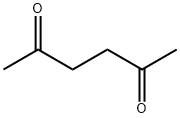
What is 2,5-Hexanedione?
Description
2, 5-hexadione (2,5HD) is a flammable, transparent colorless to amber water-soluble liquid that is a multifunctional platform chemical, a major metabolite of n-hexane, and a key intermediate for the production of high energy density aviation fuels from biomass resources. It has a sweet aromatic smell and neurotoxic effects. It can be used as a high energy density fuel additive of platform chemicals, and can induce ovarian granulosa cell cycle arrest to establish ovarian injury model. It can also be used for biological monitoring of 2, 5-hexanedione exposure to n-hexane[1-2].
Chemical properties
colourless to pale yellow liquid
The Uses of 2,5-Hexanedione
It is the metabolite implicated in n-hexane neurotoxicity.
The Uses of 2,5-Hexanedione
2,5-Hexanedione is used as a reagent in the preparation of trans-2,5-dimethylpyrrolidine. It is also used in the synthesis of 2,5-dimethylpyrroles. Further, it plays an important role as a reagent used for the protection of amino groups in amino sugars and nucleosides. In addition to this, it is used in the preparation of five-membered heterocycles like indane-type and benzannulated systems. It is also employed as a precursor in Diels-alder cycloaddition reactions.
The Uses of 2,5-Hexanedione
It was used as reference standard for the determination of 2,5HD in human urine using gas chromatography-electron capture detection and gas chromatography-mass selective detection.
What are the applications of Application
2,5-Hexanedione is a useful starting reagent for diels-alder cycloaddition reactions
What are the applications of Application
2,5-Hexanedione is a neurotoxic metabolite of n-hexanes and methyl n-butyl ketone. It is also used as the starting material for diels-alder cycloaddition reactions, such as a reactions with amines to form 2,5-dimethylpyrroles.
Preparation

20 g of diethyl 2,3-diacetylbutanedioate are mechanically shaken for several days with 250 ml (excess) of 5% aqueous sodium hydroxide, and until no diethyl 2,3-diacetylbutanedioate
separates on acidification of a sample with dilute hydrochloric acid.
The solution is then saturated with potassium carbonate and extracted
with ether,
the extract is washed with brine to remove alcohol, dried over calcium
chloride, and distilled, the fraction 192-198° C being retained. You can get 2,5-Hexanedione with a yield of 70%. Colourless liquid; agreeable odour; miscible with water, alcohol
and ether; m.p. 9° C; b.p. 194° C; d=0.973 g/ml at 20° C.
Definition
ChEBI: A diketone that is hexane substituted by oxo groups at positions 2 and 5. It is a toxic metabolite of hexane and of 2-hexanone
Synthesis Reference(s)
Canadian Journal of Chemistry, 59, p. 945, 1981 DOI: 10.1139/v81-137
Journal of the American Chemical Society, 105, p. 7200, 1983 DOI: 10.1021/ja00362a047
Tetrahedron Letters, 15, p. 4149, 1974
General Description
Clear colorless to amber liquid with a sweet aromatic odor.
Air & Water Reactions
Highly flammable. Water soluble.
Reactivity Profile
Acetonylacetone is incompatible with oxidizing agents. Acetonylacetone is also incompatible with strong bases and strong reducing agents.
Fire Hazard
Acetonylacetone is combustible.
Purification Methods
Purify it by dissolving in Et2O, stiring with K2CO3 (a quarter of the weight of dione), filtering, drying over anhydrous Na2SO4 (not CaCl2), filtering again, evaporating the filtrate and distilling it in a vacuum. It is then redistilled through a 30cm Vigreux column (p 11, oil bath temperature 150o). It is miscible with H2O and EtOH. The dioxime has m 137o (plates from *C6H6), the mono-oxime has b 130o/11mm, and the 2,4-dinitrophenylhydrazone has m 210-212o (red needles from EtOH). It forms complexes with many metals. [Werner et al. Chem Ber 22 2100 1989, for enol content see Gero J Org Chem 19 1960 1954, Beilstein 1 IV 3688.]
References
[1] KAIXUAN ZHOU, Xin L, Chenggong Sun. Directed glycerol conversion to 2,5-hexanedione and more advanced poly-oxygenates as platform chemicals and high energy–density fuel additives[J]. Chemical Engineering Journal, 2022, 430: Article 132981. DOI:10.1016/j.cej.2021.132981.
[2] XUEMING XU. The Wnt/β-catenin pathway is involved in 2,5-hexanedione-induced ovarian granulosa cell cycle arrest[J]. Ecotoxicology and Environmental Safety, 2023, 268: Article 115720. DOI:10.1016/j.ecoenv.2023.115720.
Properties of 2,5-Hexanedione
| Melting point: | -6--5 °C (lit.) |
| Boiling point: | 191 °C (lit.) |
| Density | 0.973 g/mL at 25 °C (lit.) |
| vapor pressure | 0.43 mm Hg ( 20 °C) |
| refractive index | n |
| Flash point: | 174 °F |
| storage temp. | Store below +30°C. |
| solubility | alcohol: miscible |
| form | Liquid |
| color | Clear yellow to brown |
| PH | 6.1 (10g/l, H2O, 20℃) |
| Odor | Pleasant, sweet-ethereal odor. |
| explosive limit | 1.5%(V) |
| Water Solubility | miscible |
| Merck | 14,71 |
| BRN | 506525 |
| Stability: | Stable. Incompatible with strong bases, strong reducing agents, strong oxidizing agents. Flammable. |
| CAS DataBase Reference | 110-13-4(CAS DataBase Reference) |
| NIST Chemistry Reference | CH3COCH2CH2COCH3(110-13-4) |
| EPA Substance Registry System | 2,5-Hexanedione (110-13-4) |
Safety information for 2,5-Hexanedione
| Signal word | Warning |
| Pictogram(s) |
 Exclamation Mark Irritant GHS07  Health Hazard GHS08 |
| GHS Hazard Statements |
H302:Acute toxicity,oral H315:Skin corrosion/irritation H319:Serious eye damage/eye irritation H373:Specific target organ toxicity, repeated exposure |
| Precautionary Statement Codes |
P202:Do not handle until all safety precautions have been read and understood. P260:Do not breathe dust/fume/gas/mist/vapours/spray. P301+P312:IF SWALLOWED: call a POISON CENTER or doctor/physician IF you feel unwell. P302+P352:IF ON SKIN: wash with plenty of soap and water. P305+P351+P338:IF IN EYES: Rinse cautiously with water for several minutes. Remove contact lenses, if present and easy to do. Continuerinsing. P308+P313:IF exposed or concerned: Get medical advice/attention. |
Computed Descriptors for 2,5-Hexanedione
| InChIKey | OJVAMHKKJGICOG-UHFFFAOYSA-N |
Abamectin manufacturer
AVIGYABIOSCIENCES PRIVATE LIMITED
New Products
4-Aminotetrahydropyran-4-carbonitrile Hydrochloride (R)-3-Aminobutanenitrile Hydrochloride 4-AMINO-TETRAHYDRO-PYRAN-4-CARBOXYLIC ACID HCL 4-(Dimethylamino)tetrahydro-2H-pyran-4-carbonitrile 3-((Dimethylamino)methyl)-5-methylhexan-2-one oxalate 1,4-Dioxa-8-azaspiro[4.5]decane 5-Bromo-2-nitropyridine Nimesulide BP Aceclofenac IP/BP/EP Diclofenac Sodium IP/BP/EP/USP Mefenamic Acid IP/BP/EP/USP Ornidazole IP Diclofenac Potassium SODIUM AAS SOLUTION ZINC AAS SOLUTION BUFFER SOLUTION PH 10.0(BORATE) GOOCH CRUCIBLE SINTERED AQUANIL 5 BERYLLIUM AAS SOLUTION 2-Bromo-1-(bromomethyl)-3-chloro-5-nitrobenzene 2-Bromo-3-nitroaniline N-(3-Hydroxypropyl)-N-methylacetamide 3-Bromo-6-chloropyridazine 4-ethyl-3-nitrobenzoic acidRelated products of tetrahydrofuran

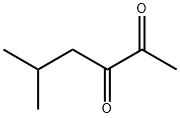

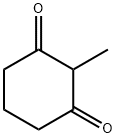
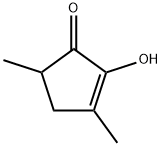
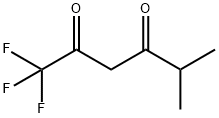
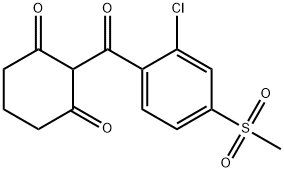
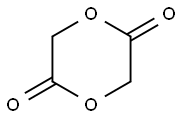
You may like
-
 110-13-4 2,5-Hexanedione, 97% 98%View Details
110-13-4 2,5-Hexanedione, 97% 98%View Details
110-13-4 -
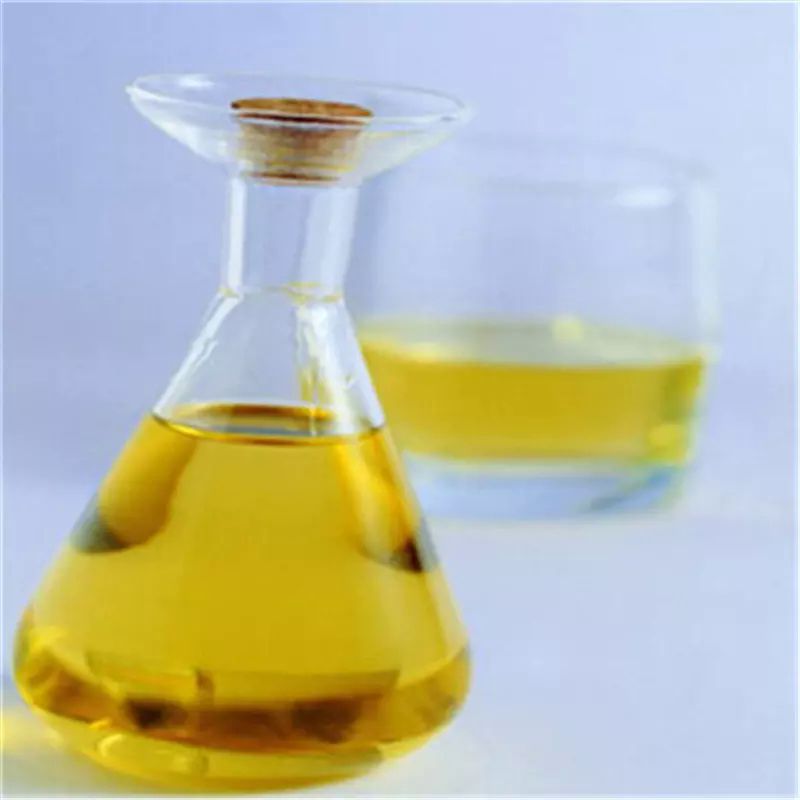 2,5-Hexanedione 98%View Details
2,5-Hexanedione 98%View Details -
 Acetonylacetone CAS 110-13-4View Details
Acetonylacetone CAS 110-13-4View Details
110-13-4 -
 2,5-Hexanedione, 98% CAS 110-13-4View Details
2,5-Hexanedione, 98% CAS 110-13-4View Details
110-13-4 -
 2,5-Hexanedione CAS 110-13-4View Details
2,5-Hexanedione CAS 110-13-4View Details
110-13-4 -
 2,5-Hexanedione CAS 110-13-4View Details
2,5-Hexanedione CAS 110-13-4View Details
110-13-4 -
 2-(3-(tert-butyl)phenoxy)-2-methylpropanoic acid 1307449-08-6 98%View Details
2-(3-(tert-butyl)phenoxy)-2-methylpropanoic acid 1307449-08-6 98%View Details
1307449-08-6 -
 Lithium ClavulanateView Details
Lithium ClavulanateView Details
61177-44-4